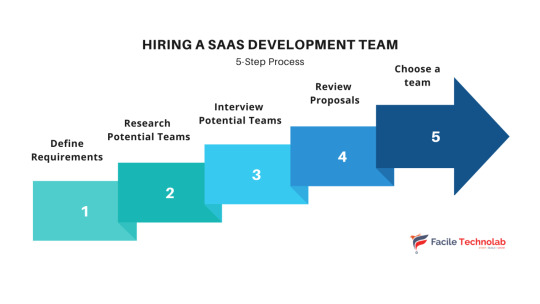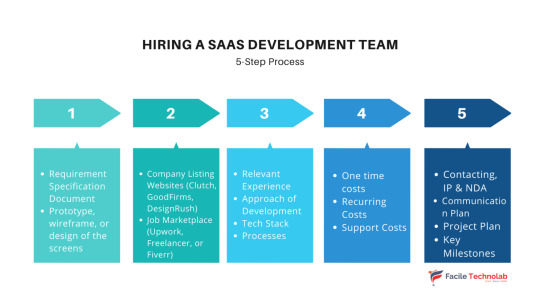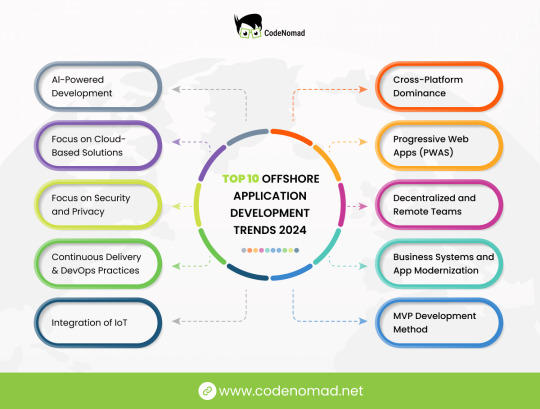#application software offshore development
Explore tagged Tumblr posts
Text
海外企業向けのソフトウェアアプリケーション開発プロセス

企画から導入まで、開発プロセスのあらゆる段階を管理する専門性を持ち、Beetechハノイ は、高度なスキルを活かして海外企業向けのアプリケーション開発における強みを発揮しています。
https://beetechsoft.com/ja/news-beetech/application-software-offshore-development
0 notes
Text
Trusted outsource software development teams - SSTech System

Outsource software development is the practice of relinquishing software-related duties to outside singularities or organizations. Outsourcing is used by firms to acquire software services and products from outside firms that do not have direct employees or employees under contract to the business entity that is outsourcing.
Infect, the outsourcing market worldwide is projected to grow by 8.28% (2025-2029) resulting in a market volume of US$812.70bn in 2029. This model is highly versatile and suits businesses of all sizes.
Start-ups often use outsourcing to develop MVPs quickly, while established companies might seek custom software development services or AI outsourcing services to address complex challenges. Outsourcing can include working with offshore development teams, global software development partners, or local experts like Australian software development experts for specific projects.
The benefits of outsourcing software development
Outsourcing has become a cornerstone for modern businesses due to its numerous advantages. Here’s a closer look at the key benefits:
1. Cost efficiency
Perhaps the biggest incentive for sourcing solutions from outsourcing service providers is the cost cutting factor. For instance, offshore software development in India provides expertise services at comparatively lower cost than that of in-house developed services in Western countries. This efficiency enable the enactments of cost savings in some other strategic sectors of the organization.
2. Access to global talent
Outsourcing can help to discover the wealth of new talents as well as the skills of professionals from other countries. No matter Whether it’s AI and machine learning integration, web application development in Australia, or outsourced healthcare software development, businesses can find experts in virtually any domain.
3. Scalability and flexibility
Outsourcing offers flexibility that is unparalleled in many organizations today. This is because; firms are able to expand and contract particular teams depending on the specific demand in projects. For example, outsourced IT solutions help business organizations prepare for different conditions while not having to employ permanent workers.
4. Faster time-to-market
With reliable software development teams in Australia or offshore development teams in India, businesses can speed up their project timelines. This helps innovations to make it through to the market early enough, which is useful for companies.
5. Focus on core activities
By delegating tasks like software maintenance and support or cloud software development in Australia to outsourcing partners, businesses can focus on their core competencies and strategic goals.
6. Reduced risk
In-house staff and trained outsourcing partners come with best practices, methods and procedures which when implemented reduce the chances of project hitch. Working with the top-rated IT outsourcing companies in Australia gives you confidence that your project is in safe hands.
Choosing the right outsourced software development partner

In the period from 2023 to 2027, the revenue of software outsourcing is forecasted to thrive at a CAGR of 7.54%. So, outsourcing partner selection is one of the most vital components since it determines the success of a given venture. Here are essential factors to consider:
1. Technical expertise
Check the partner’s competency and his knowledge of the field. For instance, SSTech System Outsourcing offers comprehensive solutions, from AI development services in India to mobile app development outsourcing in Australia.
2. Proven track record
Look for partners with a strong portfolio and positive client testimonials. A proven track record in delivering custom software development services or managing outsourcing software development contracts is a good indicator of reliability.
3. Effective communication
Effective and open communication is extremely important if the project is to be successful. Work with people who give frequent reports and employ efficient media to overcome the differences in time areas.
4. Cultural compatibility
There has to be a cultural match or at least appreciation for each other’s customs for there to be harmony in the working relationship. As such, staffed with proficient Australia software development experts or offshore development teams, whose experience is to work on global markets can coordinate and blend well with your work culture.
5. Security and compliance
You have to make sure that your partner complies with the standards and the policies that are in the industry. This is especially substantial for all information-sensitive projects such as outsourced healthcare software development or cloud software development in Australia.
6. Scalable infrastructure
Choose a partner capable of scaling their resources and infrastructure to meet your project’s evolving needs. This is crucial for long-term collaborations, especially with global software development partners.
AI-powered tools for outsourced development teams
According to a report from the US Bureau of Labor Statistics, software development ranks among the most sought-after professions. Hence, AI is at the forefront of reshaping the outsourcing industry. Therefore, the implementation of artificial intelligence will add value to business processes, make workflow easier, and boost the results of projects. Here are some examples:
1. Automated code reviews
Tools like DeepCode and SonarQube assist outsourced teams in detecting whether errors reside in the code line or not, and whether code needs to be enriched or not. This is particularly accurate concerning AI outsourcing and in-house development industries.
2. Predictive analytics
Automated analytics tools can predict such things as the time it will take to complete the project, how much money it will cost, and what risks are possible in a software development outsourcing scenario.
3. Smart project management
Tools and platforms such as Jira and Monday.com, when empowered with AI, allow the coordination of tasks and the tracking of progress and resource allocation.
4. AI collaboration tools
Communication and collaboration with internal members and offshore software development Australia partners get facilitated through applications that include, Slack, Microsoft Teams, and zoom with integrated AI functions.
5. Natural Language Processing (NLP)
AI-powered chatbots and virtual assistants simplify communication and issue resolution, making them valuable for managing outsourced IT solutions.
Best practices for managing outsourced development teams
Outsourced teams should be mandated and coordinated following a number of recommendations to ensure the efficiency of the entirety of the outsourcing process.
Here are the best practices to ensure your project’s success:
1. Set clear objectives
Make it clear to your project team, stakeholders, and other relevant parties what the parameters of the project are, what it is that you expect out of it, and what you expect to get from it in return. This fostaines consistency between your team and the outsourcing partner to increase efficiency in service delivery.
2. Choose the right tools
Use project tracking and collaboration software approaches to track and evaluate progress and meet regular informality and collaboration targets.
3. Foster a collaborative environment
It is worthy of note that constant communication is key to ensuring that your outsourcing team is on the same page with you. Fresh produce and feedback mechanisms need to be provided in order for there to be trust as is needed in project management.
4. Draft comprehensive contracts
There should be a comprehensive outsourcing software development contract. It should address issues to do with confidentiality, ownership of ideas and concepts, plea structure and mode of handling disputes.
5. Focus on long-term relationships
Building a long-term partnership with trusted providers like SSTech System Solutions can lead to consistent quality and better project outcomes.
Conclusion
To keep up with technology, outsourcing software development offers businesses solutions and support that can enable the creation of complex solutions out of mere ideas. Outsourcing has the benefits of minute overhead cost and is also a rich source of globally talented employees, and it offers the advantage of early time to market. Whether you’re looking for mobile app development outsourcing in Australia or seeking offshore software development in India or opting for AI outsourcing services, the potential is huge.
Such companies can only benefit from opting for reliable outsourcing companies such as SSTech System Outsourcing and embracing industry best practices to promote the success of business project implementations while enhancing market relevance. As technologies like AI and cloud computing are still changing the face of the outsourcing market, software development outsourcing will still be important for any company that wants to survive in a digital world.
Take the first step today—partner with global software development partners and unlock the full potential of your ideas with the power of outsourcing.
#SSTech System Outsourcing#SSTech System Solutions#AI outsourcing services#cloud computing#offshore software development#Outsource software development#AI outsourcing#web application development in Australia#custom software development services#mobile app development#outsourced IT solutions#cloud software development#IT Support & Maintenance Services
4 notes
·
View notes
Text

Offshore Software Development Services | Top Offshore Software Development Company
Join forces with a premier offshore software development company known for dependable and scalable services. Fast-track your digital transformation alongside experienced global professionals.
#Offshore Software Development Services#Top Offshore Software Development Company#Offshore Software Development Company#Offshore Software Development#offshore software development companies#offshore application development services
0 notes
Text
Importance of Building Scalable IT Products and Services for SMEs

Introduction: Why Scalability Matters for Growing Businesses Every small or mid-sized business starts with a big dream—to grow, expand, and compete with the best in the market. But while your business goals evolve, will your IT infrastructure keep up? This is where Scalable IT products become game-changers. For SMEs, scalability isn’t a “tech feature”—it’s a business survival strategy. Whether you're launching an eCommerce platform, a custom CRM, or a mobile app, building scalable software means you're investing in growth-ready technology that won’t break when demand surges. At Versasia Infosoft, we specialize in helping SMEs translate vision into high-performing, scalable, and sustainable IT products. In this article, we explore why scalability is essential—and how we help you get there. What Is a Scalable IT Product? A scalable IT product is one that continues to perform efficiently as your user base, data volume, or feature set grows. It’s designed not just for the “now,” but for the next 5-10 years of your business growth. Imagine you're a startup with 100 users. But what happens when you hit 10,000? If your application slows down or crashes, your growth becomes your bottleneck. That’s why scalability includes: Performance under load Modular architecture Cloud readiness Easy integrations Future-proof code The High Cost of Non-Scalable Software Many SMEs initially opt for cheap or fast development models. And while these MVPs might work early on, they often fall apart when the business takes off. The result? Constant downtime High maintenance costs Frustrated users Lost revenue and reputation Rebuilding from scratch later is costlier and riskier than building scalable from day one. How Versasia Infosoft Builds Scalable IT Products At Versasia Infosoft, we know that technology should never limit your potential—it should empower it. Here's how we help businesses build scalable IT systems: Custom Software Tailored to Your Growth Plans We begin by understanding your business model, target market, and growth trajectory. Then, we design your application architecture with a forward-thinking approach. We avoid one-size-fits-all templates. Instead, we focus on: Modular codebases API-first design Extensible backend frameworks This allows your product to evolve with your business needs—without needing to rebuild. Cloud-Native Development for Elastic Growth We build cloud-native applications that scale with demand. Whether you’re deploying on AWS, Azure, or GCP, our cloud solutions include: Auto-scaling Serverless architecture Load balancing Real-time analytics This means your application can handle unexpected spikes in traffic without a hitch—and you only pay for what you use. Scalable Mobile & Web Applications We use frameworks like React, Flutter, and Node.js to ensure responsive performance across devices and browsers. For example, if you're building a customer-facing mobile app, we ensure: Optimized performance for both Android and iOS Offline support and caching Seamless API integration Future scalability with modular architecture Continuous Integration & Maintenance We don’t just deliver the product and walk away. With our ongoing support, we help SMEs: Add new features without breaking existing code Monitor performance in real-time Perform load and security testing Plan future iterations based on user behavior This makes sure your IT investment keeps delivering long-term value. Real Impact: How Versasia Has Helped SMEs Scale Here are just a few ways we've helped small businesses grow with technology: ✅ A logistics startup scaled from 500 to 15,000 users in under a year We built a scalable backend that handled order processing, live tracking, and driver management. The system was cloud-native and easily adapted to surging traffic during festival seasons. ✅ A manufacturing SME digitized its entire operations We created a custom ERP that scaled as new departments and users were added. No need for third-party licenses or costly upgrades.
✅ A local service aggregator launched a mobile app with future-proof code As user engagement increased, we rolled out new features quickly—without breaking the core product. Versasia’s Commitment to Your Growth We believe that technology should not just support your growth—it should accelerate it. At Versasia Infosoft, we: Speak the language of business, not just code Build solutions, not just software Partner for the long run, not just for delivery Our teams are not just developers. We’re your strategic IT allies, constantly looking at how to make your product faster, stronger, and scalable. Final Thoughts: Plan for Tomorrow, Build Today If you’re an SME planning to grow (and we hope you are!), don’t let your IT systems hold you back. Start with a scalable foundation. Build with future growth in mind. With the right partner like Versasia Infosoft, you get more than just development—you get a growth-focused digital partner who’s just as invested in your journey as you are. Ready to Scale? Let’s talk about how we can build your next scalable IT product together
#App Development Company#Application Development#custom app development#custom development#custom offshore software development services#custom software development#custom solutions#custom web application#customized software application#offshore custom software development#Outsourcing to India#software applications#software development#Software Development Company USA#software solutions#Startup Development Technology
0 notes
Text
The financial industry landscape is evolving at an unprecedented pace, and inertia is no longer a viable strategy. Traditional financial institutions stand at a pivotal juncture. The choice is between persisting with legacy systems that erode efficiency and hinder innovation or embracing strategic partnerships that enable modernization fueled by data-driven insights and scalable infrastructure.
Today, incumbent institutions, burdened by monolithic architectures from the early 2000s, are being outpaced by more agile market players. They leverage cutting-edge technology to deliver seamless customer experiences through instant account onboarding, hyper-personalized products, 24/7 mobile accessibility, and other features. Here, the cost of inaction is eroding competitiveness and shrinking margins.
In this article, we explore why outdated legacy systems are crippling financial institutions and how to begin modernizing your technology infrastructure.
#financial#finance#legacy application modernization#app modernization#outsourcing#web development#software development#staff augmentation#custom software development#it staff augmentation#custom software solutions#it staffing company#it staff offshoring#custom software
0 notes
Text
How Open AI Codex Is Revolutionizing Software Development in 2025
By 2025, AI is vital to coding. OpenAI Codex, the brain behind Copilot, is reshaping software creation—streamlining how developers write, debug, and manage code.

#custom software development companies#custom software development company#Enterprise Software Development#hire ios developers#ios application development service#ios mobile app development company#offshore software development services
0 notes
Text
#application development companies#web application development#software agency#software development company#offshore software development
0 notes
Text
Custom software application development company
ParamInfo is a Custom Software Development Services that specializes in creating tailored software solutions to meet unique business needs. With a focus on innovation and quality, they offer end-to-end services, including requirement analysis, design, development, and maintenance, helping organizations streamline operations and drive growth.
#Custom software application development company#Software Development Company#Top Custom Software Development Companies#offshore software development services
0 notes
Text
How to Hire a SaaS Development Team in 5 Easy Steps

What is Software as a Service or SaaS?
Software-as-a-Service (SaaS) is cloud-based, on-demand software offered to businesses or individuals that solve problems for them.
Why do founders like SaaS?
The SaaS model offers several benefits for SaaS founders, including low startup costs, recurring revenue, and no installation required. These benefits can help SaaS founders grow their businesses, increase revenue, and achieve long-term success.
Before you start
Before starting the development process, it's important to conduct thorough market research to validate your idea and understand your target audience. This will help you to identify your unique value proposition, as well as any potential competitors in the market.
Once you have good market research and validated your idea, you will need a team if you are a non-technical founder or do not have experience building software products.
How to Hire a SaaS Development Team in 5 Easy Steps

Hiring a SaaS development team is crucial for the success of your project. Choosing the right team can mean the difference between a successful launch and a project that falls short of your expectations. Here are five easy steps to help you find the perfect team for your SaaS project:
Step 1: Define your project requirements
Before beginning the hiring process, it's important to clearly define your project requirements, including the scope of the project, timelines, and budget. This will help you to determine the specific skills and experience you need in a development team. Additionally, it's important to have a clear understanding of what you want the end product to look like, including features, functionalities, and user interface.
If you are not sure how to approach preparing project requirements, SaaS Development Company generally helps you with this. Just like many other SaaS Development Companies, At Facile Technolab, we also help our customers build the project requirements.
Step 2: Research potential teams
As a SaaS Founder, you can choose to use online company listing websites like Clutch, DesignRush, or GoodFirms to filter based on pricing, location, and other criteria to prepare an initial list of companies who are good with SaaS Development to approach them. The other alternative is to use Upwork or a similar marketplace where you can find interested freelancers and companies.
Research potential teams through their past projects, client testimonials, and expertise. You can also contact past clients for references and ask for portfolio samples. This will give you an idea of the team's capabilities and experience working on similar projects. Additionally, check the team's development methodologies, testing process, and project management system to ensure they align with yours.
Step 3: Interview potential teams
Once you have narrowed down your list of potential teams, conduct interviews to further assess their skills and experience. Ask about their approach to the development process, their experience with SaaS development, and their availability to work on your project. Additionally, it's important to ask about their communication style, and how they handle change requests, bugs and issues.
Step 4: Review proposals and evaluate costs
After interviewing potential teams, review their proposals and evaluate costs. Compare the costs and timelines proposed by different teams to determine the best option for your project. Be sure to take into consideration not only the cost but also the timeline and the team's experience, approach, and availability.
Step 5: Choose a team and sign a contract
Once you have chosen a team, sign a contract that outlines the scope of the project, timelines, and payment terms. Make sure to include clauses for milestones, communication, and quality assurance. This will ensure that both parties have a clear understanding of the project's expectations and the team's responsibilities. Additionally, establish a project management system that allows for clear communication and progress tracking.
Conclusion
Hiring the right SaaS Development Team is the critical step and failing to make the right choice can make you cost big time. Use this simple 5 step process to get the right SaaS Development Team for your project.

Related Resources
Top 5 mistakes when hiring SaaS Development Team and How to avoid them
Related Services
SaaS Development
Related Case Studies
FinTech Modernization and SaaS Development Case Study
Manufacturing Execution System - SaaS Platform Development Case Study
Parking Management SaaS Platform Case Study
Job Management System SaaS Platform MVP for precision component manufacturing company in Australia
More Articles related to SaaS:
Exploring the Cost-Effectiveness of SaaS Application Development Services for Startups and Entrepreneurs
Why .NET Core is a popular choice for SaaS Development?
How to Build a 10x More Efficient B2B SaaS Platform in 2024
The Future of B2B SaaS Platform Development: 9 Emerging Trends to Watch in 2024
Creating Your First B2B SaaS Platform MVP: A Comprehensive Tutorial
Building Cloud-Native B2B SaaS Software Solutions: Advantages and Strategies
The 3 Hidden Obstacles Holding Back Your B2B SaaS Dream
The Cost-Effectiveness Myth: Ensuring Value Beyond Cost Savings in Offshore Software Development
How Much Does a B2B SaaS Software MVP Development Really Cost?
Top 10 Tools Integrate in Your next SaaS Software Product MVP
How to Choose the Right Outsourcing SaaS Development Company in India
10 Popular Examples of SaaS Applications
How is the Development of SaaS Related to Cloud Computing?
4 Starter Kits to Jumpstart Your ASP.NET Core SaaS Project
The Benefits of Custom SaaS App Development for Your Business
How SaaS Software Development Companies are Revolutionizing the Tech Industry
#saas development company#saas development services#saas development agency#saas application development solutions#saas development companies#offshore software development#saas application development service#saas app development services
0 notes
Text

Stay ahead in offshore app development by embracing evolving trends like AI and IoT. Partner with top offshore developers for expertise, faster market entry, and cost efficiency to achieve your goals.
#mobile app development#mobile application development#web development#app development companies#offshore#software development#web application development#android app developers#marketing
0 notes
Text
#web application development services#offshore outsourcing software company#best software development services in india#web application development services in india#cms web development services#top mobile app development companies#dedicated development team#enterprise software development company in india#enterprise mobile app#react native mobile app development#react native app development india#nodejs development agency#node js software development agency
0 notes
Text

Avoid common mistakes that can derail your MVP development. This guide identifies typical pitfalls, such as feature creep and inadequate testing, and provides practical tips to steer clear of these issues and keep your project on track.
#application development#custom software development service#mobile software development company#mvp software development#offshore software development#software development for companies
0 notes
Text
Best Practices For Securing SaaS Applications With Workflow Apps.
Read Full Blog Hear,
Visit Website, Glasier Inc.
Our Blogs
Other Services,
hospital management system
erp software development company
Hire Angular Developers
Hire SaaS developer
Hire Flutter Developers
Hire ReactJs Developers
#hire SaaS developers#Hire SaaS developer#hire dedicated developers#custom software develpment#hire angular developers#best seo agency in india#app development#app development cost#advertising#website#offshore developers#web development#ios application development services#laravel development services#app developing company
2 notes
·
View notes
Text

How to Hire Mobile App Developers on a Budget
Uncover ways to hire the best mobile app developers on a budget, with expert advice on cost-efficient hiring and effective approaches.
#Hire Mobile App Developers on a Budget#offshore software development company#mobile application development company usa#mobile app development company usa#Hire Mobile App Developers#Hire Mobile Application Developers#Hire Mobile Application Developers in USA#Hire Mobile Application Developer
0 notes
Text
Software development is constantly growing and will continue in the coming months. Technological and societal needs drive many developments we’d likely see.
For example, the need for a secure way to execute contracts drives blockchain to the next level, while emerging AI applications require increased focus on “ethical AI” practices. Expanded use of VR and AR applications will also keep the industry evolving.
In the comprehensive guide, we’ll delve into the top 15 trends in software development to drive significant transformations in the industry.
#Agile software development#Custom Software Development Services#Latest software development trends#mobile app development services#nearshore software development#offshore software development services#software development company#Software development trends#Software development trends 2024#Trends in software development#web applications development
0 notes
Text
Data migration is inevitable for almost any business looking to upgrade its systems and adopt new technologies. Whether you’re moving to a cloud-based platform, implementing a new software solution, or consolidating databases, the way you handle data migration can make or break the success of your project. With so much at stake, including possible downtimes, future data integrity, and operational continuity, choosing the right migration strategy is no small feat.
Here, the two most common approaches are Big Bang and Gradual Data Migration. The Big Bang method is like a high-stakes, all-or-nothing move. In this case, developers rely on a single, sweeping transition that happens in one go. Gradual Migration is a more measured, step-by-step process, allowing businesses to migrate data in phases while maintaining operations. Today, we’ll consider how choosing one of these approaches can work better for your business depending on various factors.
#data migration#app modernization#legacy application modernization#outsourcing#software development#web development#staff augmentation#custom software development#it staff augmentation#custom software solutions#it staffing company#it staff offshoring#custom software
0 notes